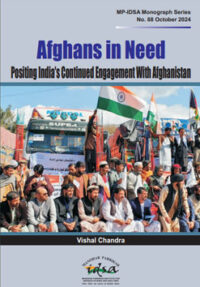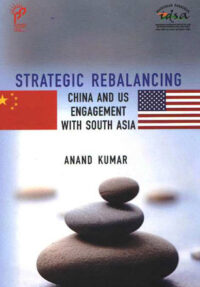Disaster Relief as a Political Tool: Analysing Indian and Chinese Responses after the Nepal Earthquakes
In the aftermath of the 2015 earthquakes in Nepal, China and India immediately sent relief teams. The relief efforts in Nepal showcase a competitive aspect of the two major regional powers, as China seeks to gradually increase its influence in South Asia. This article analyses how these two governments utilised relief efforts to increase influence in Nepal, within the wider context of the contentious Sino–Indian relationship. The Chinese and Indian relief responses after the Nepal earthquakes are extrapolated to assess their strategic utility.
The Challenges and Opportunities of a Negotiated Settlement in Afghanistan
For the last 15 years, the war in Afghanistan has caused hundreds of thousands of deaths and the United States has sent thousands of troops and spent billions of dollars supporting strategies that have been unable to curtail the violence in the country. In addition to deploying over 130,000 troops from 51 North Atlantic Treaty Organization (NATO) countries and its partner nations, the United States alone spent over $686 billion in the ‘Afghan war’.
What are India, Iran, and Afghanistan’s Benefits from the Chabahar Port Agreement?
Over the last decade we have seen a race to build ports in the Indian Ocean as the two Asian powerhouses, China and India, compete to assert their regional influence. The newest addition to this power struggle is the Chabahar Port, located in Chabahar, a coastal town in the Sistan–Baluchistan region in south-eastern Iran, next to the Gulf of Oman, and at the mouth of the Strait of Hormuz (Figure 1). Its strategic importance and economic value have drawn attention from many countries; however, India was the quickest to secure a deal to develop the port.
Sub-Regionalism in South Asia: A Case Study of the Bangladesh–Bhutan–Nepal–India Motor Vehicles Agreement
This article has two parts. The first part aims at analysing why nations are increasingly going beyond their multilateral and regional moorings to secure and advance their national interests. In doing so, why and how do they indulge in sub-regional engagements? It has been empirically seen across the board in almost every part of the world that sub-regional growth initiatives play a significant role in regional integration.
Assessing India’s Rise and the Road Ahead
This article analyses India’s economic, military and political rise in the international state system. It concludes that India is on the rise in all three power dimensions, underpinned by a larger share of global GDP. However, it also identifies the constraints on the way. On matters concerning its economy, India lags behind in industrial prowess, innovation, socio-economic development and financial strength. While modernising its defence capabilities, it faces obstacles due to budget issues, institutional constraints and a weak defence industry.
India’s Foreign Policy Priorities and the Emergence of a Modi Doctrine
India’s current Prime Minister Narendra Modi is often touted as India’s Deng Xiaoping, expected to lead the country on a path of economic reform and accelerated growth.1 While Modi rose to power on an economic mandate, it is his foreign policy that has received the most attention in the media. Modi has been criticised by the media, the public and the opposition parties for taking several overseas trips in his short tenure in office.
The Role of India and China in South Asia
India is often perceived as a regional power, but a closer look reveals that it is in a disadvantageous position vis-à-vis China in South Asia. The first reason is that Indian governments never had the political, economic, and military capacities to pursue their regional power ambitions with their neighbours in the long run. South Asian countries could always play the China card in order to evade India’s influence. Second, India’s new South Asia policy with the focus on trade and connectivity has improved regional cooperation since 1991.
The International Community’s Intervention during the Conclusion of the War in Sri Lanka
This article explores the backdrop of the engagement between the International Community (IC) and the Government of Sri Lanka (GoSL) over the conduct of the military during the last stages of its engagement with the secessionist Tamil militants which (especially from January to May 2009) led to a humanitarian crisis. The efforts of the IC to persuade the GoSL to halt the military operations and the Liberation Tigers of Tamil Eelam (LTTE) to concede defeat, to ensure human security, were a failure.
A Failed US Peace Building Project in Afghanistan: Exploring Cause–Effect Relationship
This article argues that while the concept of peace building proved beneficial to Western society, it drew flak in pre-2014 Afghanistan for its inbuilt faults, the overarching US–Taliban conflict and the state failure towards meeting the prerequisites of the coalition strategy. It also argues that peace building in the immediate future of post-2014 Afghanistan is improbable due to the existing and likely conflicts between and among the Afghan government, the Taliban and the newly emerging Daesh or IS group for power, group and ideological domination.















